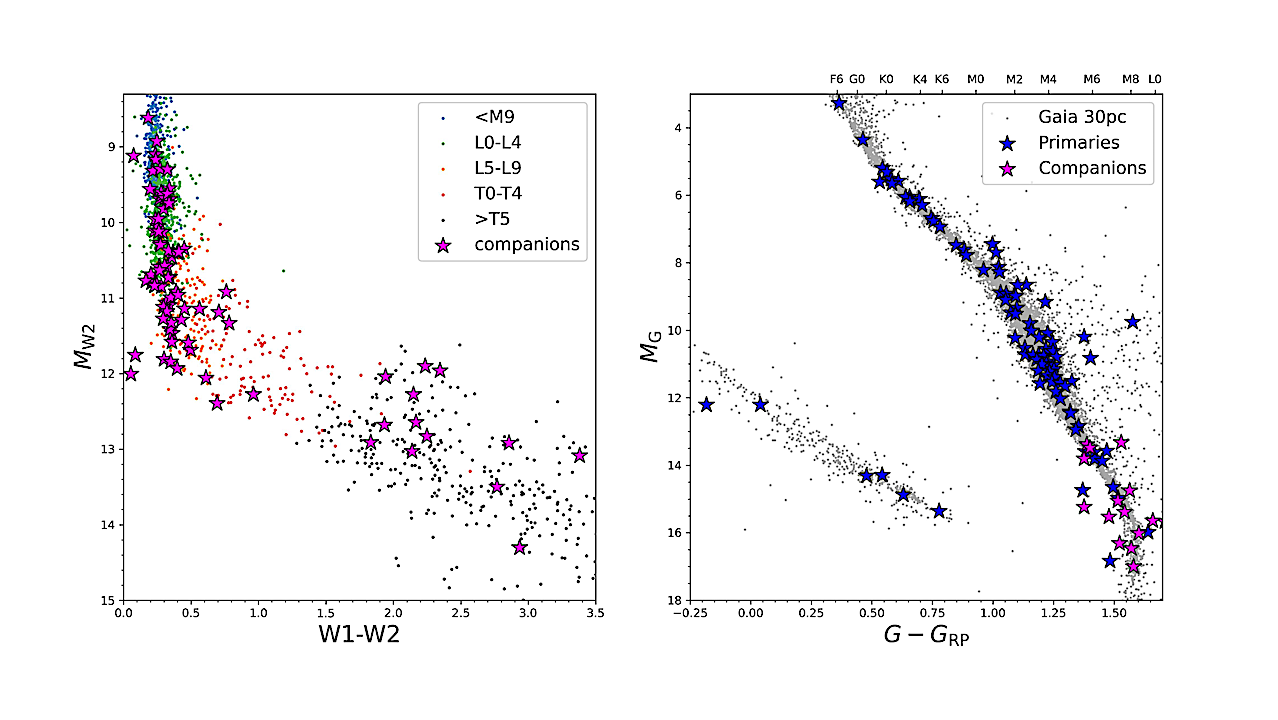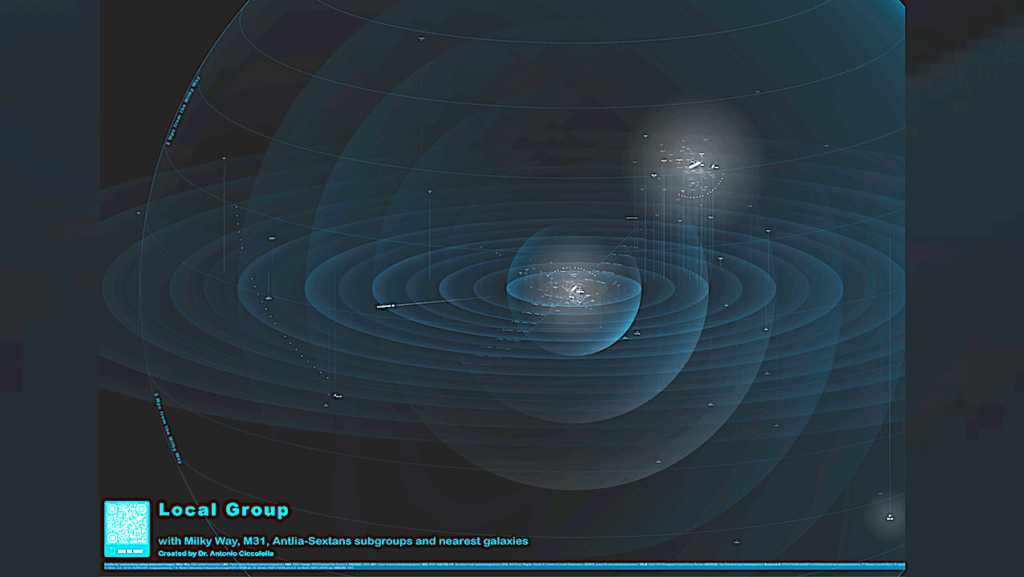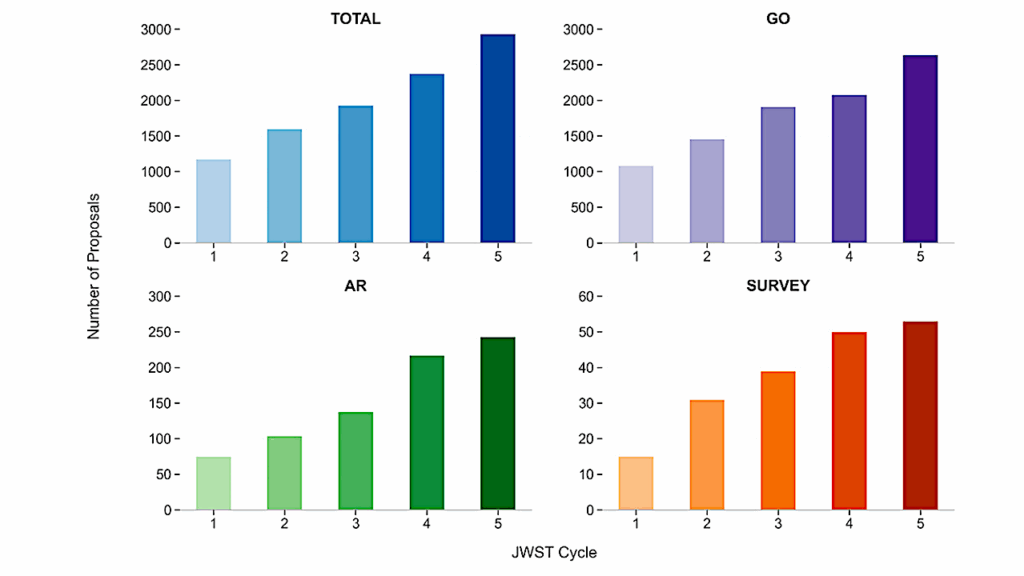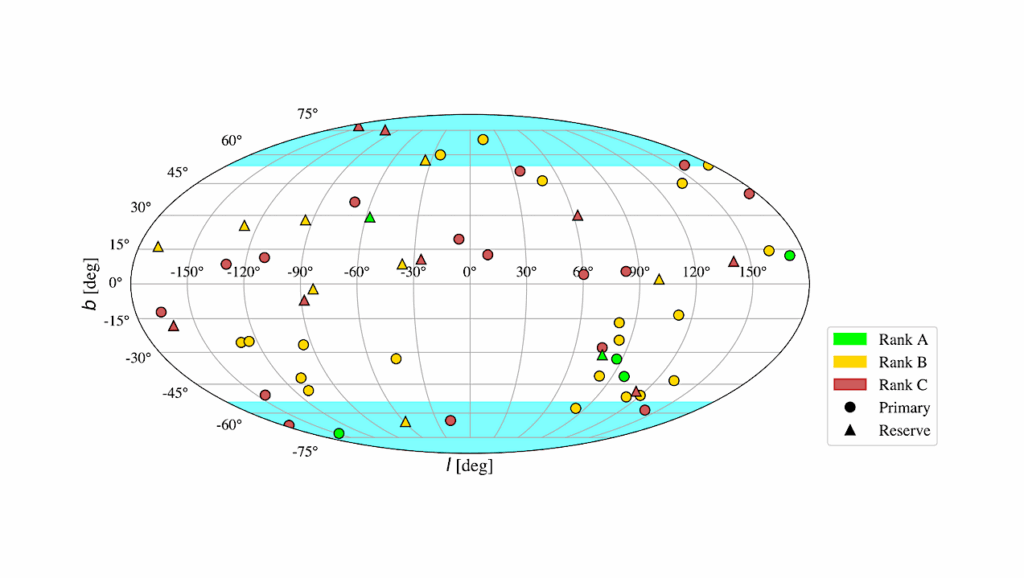89 New Ultracool Dwarf Co-Moving Companions Identified With The Backyard Worlds: Planet 9 Citizen Science Project

We report the identification of 89 new systems containing ultracool dwarf companions to main sequence stars and white dwarfs, using the citizen science project Backyard Worlds: Planet 9 and cross-reference between Gaia and CatWISE2020.
Thirty-two of these companions and thirty-three host stars were followed up with spectroscopic observations, with companion spectral types ranging from M7-T9 and host spectral types ranging from G2-M9. These systems exhibit diverse characteristics, from young to old ages, blue to very red spectral morphologies, potential membership to known young moving groups, and evidence of spectral binarity in 9 companions. Twenty of the host stars in our sample show evidence for higher order multiplicity, with an additional 11 host stars being resolved binaries themselves.
We compare this sample’s characteristics with those of the known stellar binary and exoplanet populations, and find our sample begins to fill in the gap between directly imaged exoplanets and stellary binaries on mass ratio-binding energy plots.
With this study, we increase the population of ultracool dwarf companions to FGK stars by ∼42\%, and more than triple the known population of ultracool dwarf companions with separations larger than 1,000 au, providing excellent targets for future atmospheric retrievals.
Austin Rothermich, Jacqueline K. Faherty, Daniella Bardalez-Gagliuffi, Adam C. Schneider, J. Davy Kirkpatrick, Aaron M. Meisner, Adam J. Burgasser, Mark Kuchner, Katelyn Allers, Jonathan Gagné, Dan Caselden, Emily Calamari, Mark Popinchalk, Roman Gerasimov, Christian Aganze, Emma Softich, Chin-Chun Hsu, Preethi Karpoor, Christopher A. Theissen, Jon Rees, Rosario Cecilio-Flores-Elie, Michael C. Cushing, Federico Marocco, Sarah Casewell, Les Hamlet, Michaela B. Allen, Paul Beaulieu, Guillaume Colin, Jean Marc Gantier, Leopold Gramaize, Peter Jalowiczor, Martin Kabatnik, Frank Kiwi, David W. Martin, Billy Pendrill, Ben Pumphrey, Arttu Sainio, Jorg Schumann, Nikolaj Stevnbak, Guoyou Sun, Christopher Tanner, Vinod Thakur, Melina Thevenot, Zbigniew Wedracki
Comments: 61 pages, 11 figures, 11 tables. Accepted for publication in AJ
Subjects: Solar and Stellar Astrophysics (astro-ph.SR); Earth and Planetary Astrophysics (astro-ph.EP)
Cite as: arXiv:2403.04592 [astro-ph.SR] (or arXiv:2403.04592v1 [astro-ph.SR] for this version)
Submission history
From: Austin Rothermich
[v1] Thu, 7 Mar 2024 15:39:04 UTC (13,369 KB)
https://arxiv.org/abs/2403.04592
Astrobiology








